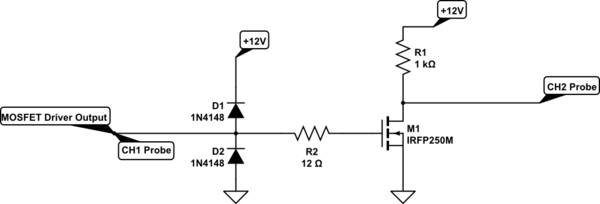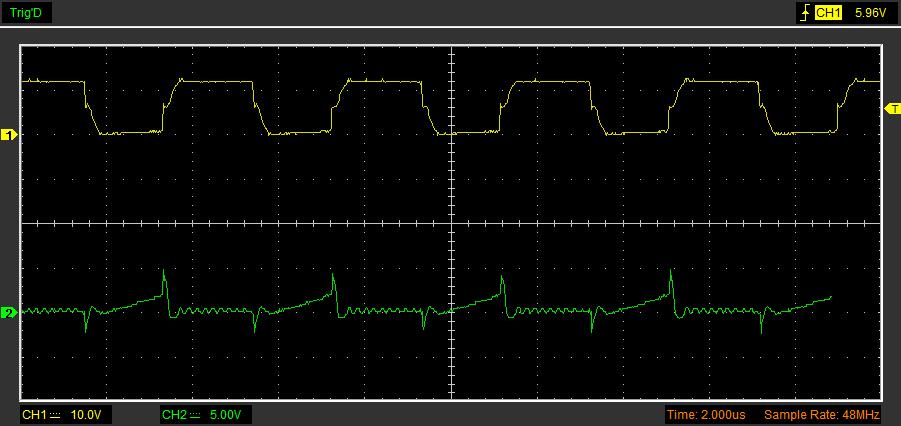It looks like you have two (or more) problems. First your output signal appears to be AC coupled so you are not seeing the DC level. But what you would expect in that case would be two spikes, one at each edge of the square wave in opposite directions.
Which brings us to the second problem. You are driving a rather beefy MOSFET with a rather high value pullup resistor at a relatively high frequency. In addition to that your probe with whatever it is connected to is adding even more capacitance. So you see a sharp negative-going spike when the MOSFET turns 'on' but a slow ramp when it turns off.
The capacitance appears still to be quite large compared to the 315pF typical output capacitance of the MOSFET. Check the probe capacitance and use a x10 setting if possible. Also check that the resistor is actually 1K and not 10K (sometimes color codes can be confusing, especially if you mix 4 and 5 band resistors).



